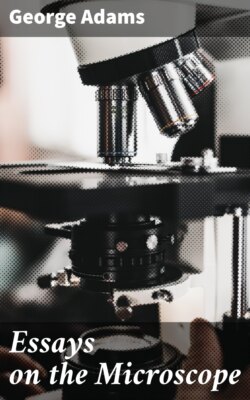Читать книгу Essays on the Microscope - George Comp Adams - Страница 28
На сайте Литреса книга снята с продажи.
DESCRIPTION OF CUFF’S DOUBLE-CONSTRUCTED MICROSCOPE, REPRESENTED AT Fig. 1. Plate VII. A.[32]
ОглавлениеTable of Contents
[32] The compound or double microscope is in more general use than any other sort. Besides its being less expensive than the lucernal or complete solar, it is found commodious and portable in the observer’s apartment, when only a confined degree of microscopical pursuit is intended, and that chiefly for a few hours amusement; it may be used both by day and night. In the most improved of this kind the objects appear magnified in a field of view from about 12 to 15 inches in diameter. It is better adapted to transparent than to opake objects, yet the latter may often be viewed to great advantage by the assistance of the sun’s rays or the light of a candle condensed on them. The intelligent reader, by attending to the accounts of the different microscopes described in this work, will be enabled to select that best adapted to the kind of objects he wishes to explore, and the manner in which he is desirous of having them exhibited. Edit.
This instrument was first described by Mr. Baker, and recommended by him. It was also described by my father in the fourth edition of his Micrographia Illustrata, page xix.
A B C represents the body of this microscope; it contains an eye-glass at A, a large lens at B, and a magnifier which is screwed on at C, one of which is represented at Q.
The body of the microscope is supported by the arm D E, from which it may be removed at pleasure.
The arm D E is fixed on the sliding bar F, and may be raised or depressed to any height within its limits.
The main pillar a b is fixed in the box b e, and by means of the brass foot d is screwed to the mahogany pedestal X Y, in which is a drawer containing all the apparatus.
O, a milled-headed screw, to tighten the bar F when the adjusting screw c g is used.
p q is the stage or plate which carries the objects; it has a hole at the center n.
G, a concave mirror, that may be turned in any direction, to reflect the light of the candle, or the sky, upon the object.
